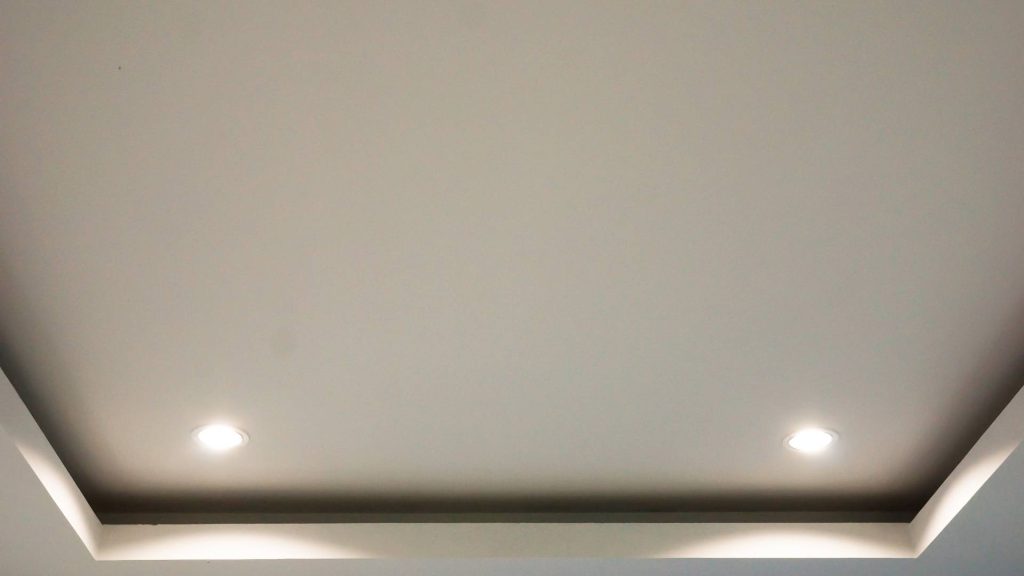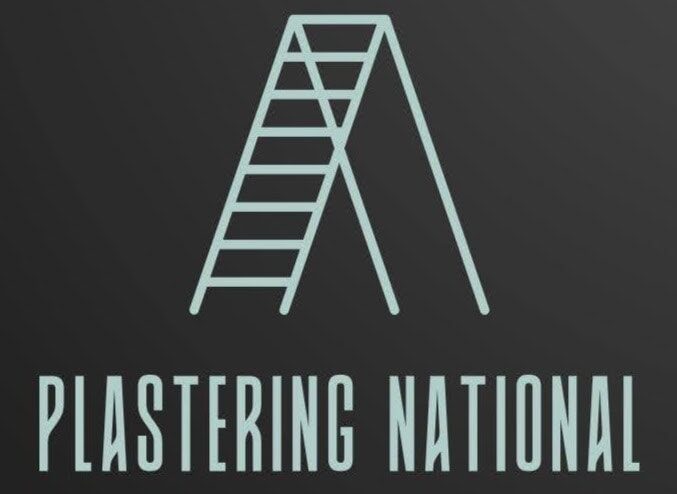Plaster ceilings have been a key feature in architecture for centuries, providing both aesthetic appeal and structural integrity. Whether used in a heritage home or a new build, plaster continues to be a material that offers durability and beauty. In this guide, we’ll explore the plaster ceiling benefits, common drawbacks of plaster ceilings, and practical considerations for plaster ceiling installation and plaster ceiling repair.
Let’s Get Straight To The Point
Plaster ceilings offer numerous benefits, including durability, aesthetic appeal, and improved acoustics. Common types of plaster for ceilings include gypsum plaster, lime plaster, and cement plaster, each suited for different needs.
Plaster ceilings are ideal for decorative designs and long-term durability, but they can be prone to cracking, water damage, and require more complex and costly repairs compared to alternatives like drywall or dry lining. Plaster ceiling repair and installation require skilled professionals, especially for issues like cracks and water damage. Overall, plaster is an excellent choice for those seeking a timeless, durable, and acoustically beneficial ceiling, but it comes with higher costs and maintenance needs.
Plaster Ceiling Benefits
There are many advantages to choosing plaster for ceilings. Let’s delve into some of the key plaster ceiling benefits that make it an appealing option for homeowners and builders.
1. Durability
Plaster ceiling durability is one of the main reasons it remains a popular choice. Unlike drywall, plaster hardens over time, creating a dense and solid surface that can withstand wear and tear. When properly maintained, plaster ceilings can last for generations, requiring minimal repairs.
2. Aesthetic Appeal
Plaster is a versatile material that can be moulded into elaborate plaster ceiling designs. From ornate cornices to textured finishes, plaster ceilings offer endless possibilities for creating a visually stunning feature in a room. Decorative plaster ceilings add a sense of elegance and sophistication, especially in older or period-style homes.
3. Improved Acoustics
Acoustic plaster ceilings are a significant benefit for properties where sound control is important. The density of plaster helps absorb sound, reducing noise levels and improving room acoustics. This is particularly beneficial in spaces such as home theatres, libraries, or music rooms.
4. Health and Environmental Benefits
Plaster is a non-toxic, eco-friendly material, making it a healthier choice for indoor environments. Unlike synthetic materials, plaster does not release harmful chemicals into the air. Additionally, it is fire-resistant, providing an extra layer of safety in case of a fire.

Drawbacks of Plaster Ceilings
Despite the many benefits, there are also some drawbacks of plaster ceilings that homeowners should consider.
1. Cracking
Over time, plaster ceilings may develop cracks, especially in older homes where the building may settle. While minor cracks are generally cosmetic, larger cracks need to be addressed quickly to prevent structural damage. Plaster ceiling cracks can be repaired with plaster ceiling repair techniques, but they do require skilled tradespeople to match the original texture and finish.
2. Water Damage Vulnerability
Plaster ceilings are vulnerable to water damage, particularly if there are leaks from the roof or plumbing. Water damage plaster ceiling repair is crucial to maintaining the ceiling’s integrity. Water infiltration can lead to discolouration, bubbling, and even the deterioration of the plaster material.
3. Labour-Intensive Repairs
Repairing plaster ceilings is more complex than fixing drywall. The process often requires plastering services from skilled professionals who are familiar with the material’s nuances. Plaster ceiling repair Melbourne services, for example, may involve replacing damaged sections or reattaching loose plaster to the ceiling structure.
4. Higher Installation Costs
Plaster ceilings tend to be more expensive than drywall due to the labour-intensive installation process. Plaster ceiling installation involves multiple layers of plaster that must be applied and allowed to dry before further layers can be added. The skilled tradespeople required for this process can make the cost higher than alternatives.
Alternatives to Plaster Ceilings

While plaster remains a popular choice, there are alternatives available that may be better suited to certain projects. Two common alternatives are gypsum boards (drywall) and dry lining.
Gypsum Boards (Drywall)
Gypsum boards are quicker and cheaper to install than plaster, and they offer a smooth finish. However, they lack the durability and acoustic plaster ceilings benefits of plaster. Gypsum plaster ceilings are ideal for projects that require faster turnaround times and a cost-effective solution.
Dry Lining
Dry lining is another alternative where plasterboard is applied to the ceiling surface using adhesive or screws. It’s a faster and simpler installation method but may not provide the same level of durability or aesthetic appeal as plaster. However, dry lining does allow for easier repair and modification compared to plaster.
Choosing Between Plaster and Alternatives
When deciding between plaster and alternatives like gypsum or dry lining, there are a few key factors to consider:
- Cost: Plaster is more expensive to install, but it offers superior durability and aesthetic value.
- Aesthetic Preferences: If you want intricate designs or decorative features, plaster is the better choice.
- Sound Insulation: For improved acoustics, acoustic plaster ceilings are far superior to alternatives like drywall.
- Project Timeline: For a quicker installation, drywall or dry lining may be more practical.
Conclusion
Plaster ceilings offer a unique combination of plaster ceiling benefits, including durability, aesthetic appeal, and improved acoustics. Whether you’re opting for gypsum plaster ceilings, lime plaster for ceilings, or decorative plaster ceilings, the material provides lasting beauty and functionality. However, it’s essential to consider the drawbacks of plaster ceilings, such as cracking and water damage, as well as the higher cost of installation.
If you’re looking for plaster ceiling restoration or plaster ceiling repair, working with skilled professionals ensures that your plaster ceilings remain in top condition. Whether you’re renovating a heritage home or installing plaster ceilings in a new build, plaster continues to be a premium option for those who value both style and durability.
Frequently Asked Questions
Why Choose Plaster For My Ceiling Instead Of Other Materials Like Drywall?
Plaster offers a range of benefits over other materials. Its unparalleled aesthetic appeal allows for intricate designs and a smooth finish that can add character and elegance to any room. Plaster is also known for its durability, fire resistance, and sound-dampening properties, making it a long-lasting and practical choice. However, it’s important to consider that plaster can be more expensive and requires skilled installation compared to more straightforward options like drywall.
What Are The Main Drawbacks Of Plaster Ceiling Plaster?
While plaster ceilings have many benefits, there are a few drawbacks. The installation process can be complex and time-consuming, requiring professional craftsmanship and leading to higher initial costs. Plaster is also heavier than alternative materials, potentially necessitating additional structural support. Modifying or repairing plaster ceilings can be challenging, as it’s difficult to match the original texture and finish.
Can Plaster Ceilings Improve The Energy Efficiency Of My Home?
Yes, one of the benefits of plaster is its ability to enhance energy efficiency. Plaster has good insulation properties, helping to keep your home warmer in the winter and cooler in the summer. This can lead to reduced heating and cooling costs over time, making plaster an environmentally friendly and cost-effective choice in the long run.
How Does Plaster Compare To Drywall In Terms Of Maintenance And Durability?
Plaster is generally more durable than drywall, resistant to dings and scratches, and can last for decades with minimal maintenance. It’s less susceptible to damage from minor impacts, contributing to its longevity. However, plaster can be more challenging to work with when repairs are needed than drywall. Matching the texture and finish of plaster for repairs requires more skill than repairing the more uniform drywall surface.
Are There Any Health Benefits To Using Plaster For Ceilings?
Plaster has several health benefits, primarily due to its breathability. It allows moisture to pass through, reducing the risk of mould and mildew growth in your home, which can improve indoor air quality. This is especially beneficial for individuals with allergies or respiratory issues. Plaster does not emit volatile organic compounds (VOCs), making it a safer choice for indoor environments than some manufactured materials that can off-gas chemicals.

